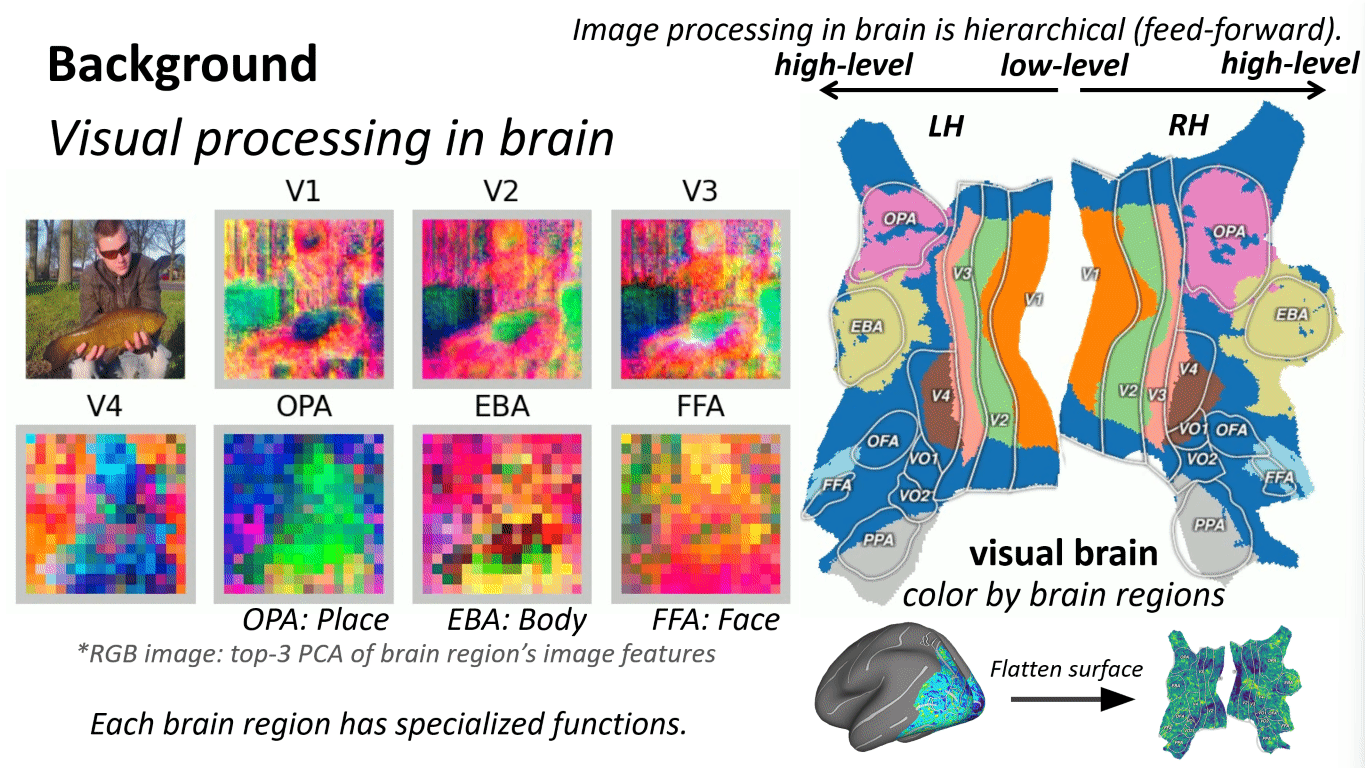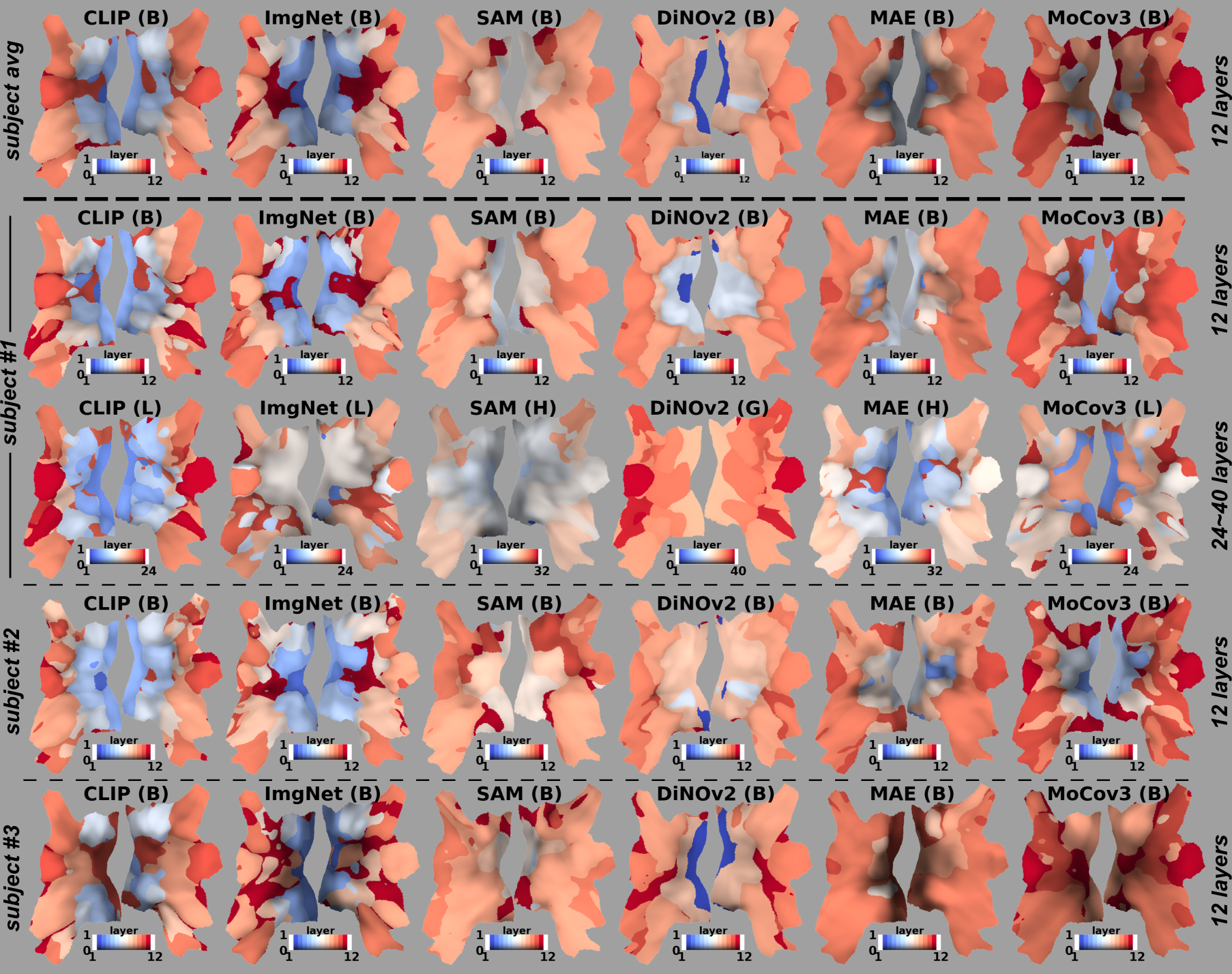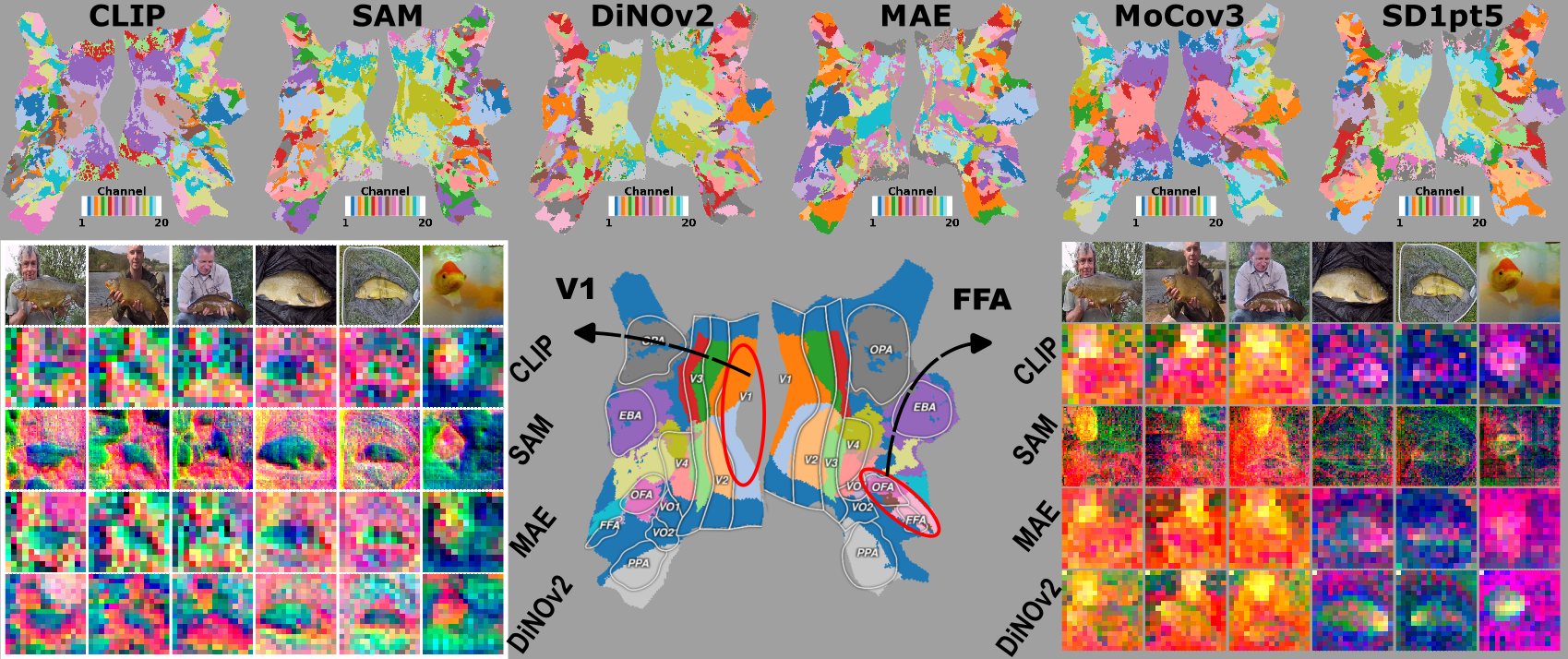
Visual brain is organized into regions, each region has specialized functions. For example, V1 does edge-detection and orientation filtering. FFA is face selective, if there’s a face, neurons in FFA fire.
In the brain, Image processing and feature computation are organized in a hierarchical and largely feed-forward fashion. V1 is the initial visual region that physically connected to input from the eyes. Representation in the brain become increasingly abstract from V1 onwards to other regions.

Visualization (Brain-to-Network Alignment) is a by-product of brain encoding model, each brain voxel selects:

The intuitive understanding for our visualization is: each brain voxel asks the question, “which network layer/space/scale/channel best predicts my brain response?”.
Brain encoding model over-simplified:


